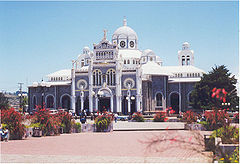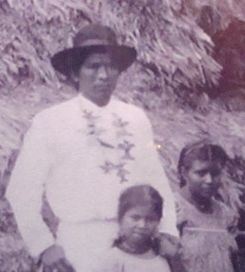
Costa Rica apart from its great natural beauty is a country full of Culture and History. Here we tell you about two important Native Indigenous Kings of the 19th century.
Antonio Saldaña.
Antonio Saldaña was a Bribri chief and the last king of Talamanca in Costa Rica. Belonging to the Salwak clan (“owners of the red monkey”, Ateles sp.), He succeeded his predecessor William Forbes, in 1880. Saldaña was the king of the Bribris, Cabécares, Teribes, Changuinolas, and Borucas.

He was recognized by some 3,200 indigenous inhabitants and by the government of Costa Rica, which since 1867 had declared the Native Kings of Talamanca as political leaders of the area. Being a maternal nephew of Santiago Mayas, he had three sisters and he also had three wives named Oleria, Leonor Almengor, and Aurelia Cuéllar, since polygamy was used among the Bribris at that time.
In 1882, the Swedish traveler Carl Bovallius described Antonio Saldaña as a young and well-developed Indian, 1.80 m tall. He was simply dressed, but differentiated from others by wearing his gold insignia and the chief’s scepter.
He opposed banana exploitation by the United Fruit Company (UFCO) on their land, as well as white man`s intervention in indigenous education and culture, although he also frequently called on the government for help.
Antonio Saldaña died on January 3, 1910, along with his nephew José, who was to succeed him, thus ending the Bribri dynasty. It is suspected that they died poisoned; some accusations suggest that he was poisoned by the United Fruit Company for his opposition to it.
His minor nephew, Ramón Almengor, claimed the title but was not recognized either by the government of Costa Rica or by any other indigenous ethnic group except the Bribris, and died of tuberculosis on January 28, 1922, at the San Juan de Dios Hospital, in San José.
Because the royal inheritance between the Bribris is matrilineal, the successor had to be the first-born son of the king’s older sister, and since Ramón’s sisters did not have male children, the royal line was considered vacant. Years later, Saldaña’s descendants tried to claim the title but to no avail.
Santiago Mayas.
An Indigenous King of Costa Rica, born around 1834. He belonged to the Bribris ethnic group, of which he became King in 1862, although subject to the authority of King Chirimo.
In his youth he frequented had to deal with non-indigenous Costa Ricans who came into their territory, and as King, he had as secretary the British John H. Lyon, who contracted nuptials with one of his sisters.
Santiago Mayas was the first Indigenous King of Costa Rica to visit the cities of Cartago and San José, in 1871. He is described as an intelligent man, of firm will and good judgment, but he was often drunk and then acted violently and despotic. He had three wives.
King Santiago’s authority was challenged in 1871 by his cousin Lapis, who was the second indigenous chief in the region. Lapis tried to assassinate the monarch, but the latter learned of the conspiracy and ordered his arrest, he managed to escape to the mountains, where he died alone.
In January 1872, several friends and relatives of Lapis, including a noble named Birche, ambushed King Santiago Mayas, who was shot dead; they set fire to his palenque and seized his women and all his property. His relative Birche succeeded him as King.

